 In recent months, I’ve been reminded of the power of donor databases and Customer Relationship Management (CRM) systems. For-profit corporations grasped the importance of gathering customer data a long time ago, which is why they invested in these systems before many non-profit organizations started doing so. I will divide the remainder of this blog post up into sections and share a few personal stories about my experiences in recent months. At the end of this post, I’ll share a few resources to help you with your search.
In recent months, I’ve been reminded of the power of donor databases and Customer Relationship Management (CRM) systems. For-profit corporations grasped the importance of gathering customer data a long time ago, which is why they invested in these systems before many non-profit organizations started doing so. I will divide the remainder of this blog post up into sections and share a few personal stories about my experiences in recent months. At the end of this post, I’ll share a few resources to help you with your search.
What is the difference?
I suspect the difference between a traditional donor database and a CRM is getting smaller and smaller as time passes. However, I think the whitepaper at culturehive.co.ik titled “Do I need a CRM or a donor database?” written by Mags Rivett at Purple Vision did a nice job spelling out the technical differences.
Here is how Mags described a donor database:
“A donor database can be anything from an Excel spreadsheet or Access database through to a tool available on the open market or even built especially for you. The definition of a database is usually much more limited than that for CRM: ‘A database is a collection of information that is organized so that it can easily be accessed, managed, and updated.’ (Google Dictionary)”
Likewise, here is how a CRM was described:
“Today, CRM has assumed two meanings. It is both: a) the approach of successfully managing customer and organisational relationships (be that for business, fundraising or service delivery) and b) the tool which we use to manage the relationships. We think of it as being the 360 degree view of our customers and the work of the organisation.”
Still don’t understand the difference? Don’t worry about it. Please trust me when I tell you:
- you need a tool like this in order to make your private sector fundraising program run effectively in the 21st Century
- you shouldn’t just purchase one and think that all of your problems are now solved
- you need to connect and integrate your other systems with this tool
- you need to build organizational capacity around this tool (e.g. written policies and procedures)
- you need to put staffing around this tool
Does this sound like work? Of course it is! But it is worthwhile because this tool will help you build and deepen relationships with prospects and donors, which is what resource development is really all about. Right?
Welcome aboard, Mr Anderson!
![IMG_20150414_215128628[1]](https://donordreams.files.wordpress.com/2015/06/img_20150414_2151286281.jpg?w=169) My husband and I like to take cruises every other year and visit fun places. Over the years we’ve traveled to the Caribbean, Greek Islands, Scandinavian peninsula (and St. Petersburg, Russia), Alaska, and recently the Panama Canal (and Central America).
My husband and I like to take cruises every other year and visit fun places. Over the years we’ve traveled to the Caribbean, Greek Islands, Scandinavian peninsula (and St. Petersburg, Russia), Alaska, and recently the Panama Canal (and Central America).
Over the last 10 years, we’ve only sailed on Princess Cruises, and they’ve collected an awful lot of data on us. For example, they know:
- Our age
- Our birthdays
- Our dining preferences
- Our entertainment preferences
- Our drinking preferences (e.g. we’re oenophiles)
- Our weakness for buying artwork
- Our desire to purchase off-ship excursion packages
I am confident this information is stored in a CRM of some sort because I see signs of it from the moment I walk onto the cruise ship. The following is what is waiting for me in my cabin mailbox:
- advertisements for the special wine club membership (for discounts on bottles of wine)
- invitations to wine tastings
- brochures for upcoming excursions
- invitations to purchase tickets at the captains dining table
- a handwritten card from the art director welcoming me back and inviting me to the first art show
![IMG_20150414_191147999_HDR[1]](https://donordreams.files.wordpress.com/2015/06/img_20150414_191147999_hdr1.jpg?w=300) While some people think this level of interaction is creepy, I believe the vast major of people (including myself) find this comforting and convenient. I prefer to think of it differently. I’m in a 10 year relationship with Princess Cruises, and they better know my preferences just like my husband better know my eye color.
While some people think this level of interaction is creepy, I believe the vast major of people (including myself) find this comforting and convenient. I prefer to think of it differently. I’m in a 10 year relationship with Princess Cruises, and they better know my preferences just like my husband better know my eye color.
Of course, relationship building goes beyond simply tracking my expenditures and targeting special events and offers at me. It includes more fundamental relationship building tactics like sending a bottle of champagne and a hand written note immediately following our purchase of artwork.
Non-profit organizations who use these types of systems are:
- customizing how they communicate with their supporters (based on the donor’s interests and desires)
- targeting donors with specific invitations, campaigns and appeals
- celebrating specific milestones (e.g. birthdays, anniversaries, etc)
- connecting supporters based on affinity groups and backgrounds
- managing events and campaigns
I don’t know about you, but this all seems very convenient and helpful to me from a donor perspective. Dare I suggest . . . “very donor-centered“.
Welcome back, Mr. Anderson!
 When I returned from my cruise at the end of April, I immediately hit the road on a business trip. Whenever I visit this one particular client, I always stay at the same hotel — Marriott SpringHill Suites.
When I returned from my cruise at the end of April, I immediately hit the road on a business trip. Whenever I visit this one particular client, I always stay at the same hotel — Marriott SpringHill Suites.
When I checked into the hotel, the front desk person:
- greeted me by name
- knew my room preferences
- reminded me of things that we’ve talked about before
And this time, they asked if I had enjoyed my Panama Canal cruise. The catch is that I had never told that particular front desk person about my cruise. Hmmmmm? I smell the existence of a CRM.
As I said in the previous section, I’m sure there are people who find this kind of stuff scary. However, I find it comforting and reassuring. It is nice to connect with people on a more personal level. In my opinion, it is the essence of being human.
Choosing a system that is right for your non-profit
OK . . . these systems can be expensive, especially when you add in the costs associated with creating systems, hiring people and developing policies and procedures. So, my advice is simple . . .
Treat this decision like you might do so with a marriage proposal
- Think through what you really need
- Involve all stakeholders
- Develop a budget
- Try different systems on for size
- Ask lots of questions
I once came across an awesome online workbook titled “Getting the Most from Your Decision: Four Steps to Selecting Donor Management Software” developed by NPower Seattle. I think this step-by-step workbook is awesome, and I suggest you click-through and use it if you are thinking about purchasing a donor database or CRM.
While I don’t endorse products at DonorDreams blog, I have had experiences with certain products that I feel are worthy of your investigation. The following is a short list you might want to look into:
There is no such thing as a perfect product, and you need to find what best fits you.
I strongly urge you NOT to pick-up the phone and start calling sales professionals for these companies. Sit down with the NPower Seattle workbook first and determine your needs and wants first.
Is your non-profit organization using a CRM or donor database? How is that going for you? Please scroll down and share your experiences in the comment box below. We can all learn from each other.
Here’s to your health!
Erik Anderson
Founder & President, The Healthy Non-Profit LLC
www.thehealthynonprofit.com
erik@thehealthynonprofit.com
http://twitter.com/#!/eanderson847
http://www.facebook.com/eanderson847
http://www.linkedin.com/in/erikanderson847


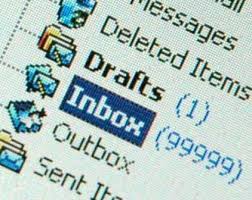 I was chatting the other day with a newly elected board president. He was lamenting the fact that his fellow board volunteers don’t respond to his emails very well, and he wanted a little advice on how to change this dynamic. If this is a problem for your organization, then please keep reading.
I was chatting the other day with a newly elected board president. He was lamenting the fact that his fellow board volunteers don’t respond to his emails very well, and he wanted a little advice on how to change this dynamic. If this is a problem for your organization, then please keep reading. Within this broad category, there are many considerations.
Within this broad category, there are many considerations. Believe it or not, how you are structured can greatly effect how people decide to use email as it relates to your organization.
Believe it or not, how you are structured can greatly effect how people decide to use email as it relates to your organization.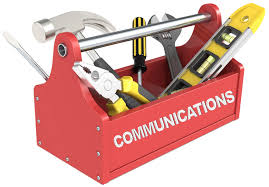 Email is simply a communication tool. Here is an inventory of tools/processes/approaches that you may find in your communications toolbox:
Email is simply a communication tool. Here is an inventory of tools/processes/approaches that you may find in your communications toolbox: This month DonorDreams is hosting the nationally acclaimed
This month DonorDreams is hosting the nationally acclaimed  Ahhhh, yes. I remember this embarrassing lesson very well. It occurred in the late 1990s when I was a young Boy Scout professional who was responsible for membership management, district-wide programming, local unit support and fundraising for a small suburban district in the Northwest Chicago suburbs. It was the 20th Century and the idea of email was new and evolving as a way to communicate with non-profit volunteers.
Ahhhh, yes. I remember this embarrassing lesson very well. It occurred in the late 1990s when I was a young Boy Scout professional who was responsible for membership management, district-wide programming, local unit support and fundraising for a small suburban district in the Northwest Chicago suburbs. It was the 20th Century and the idea of email was new and evolving as a way to communicate with non-profit volunteers.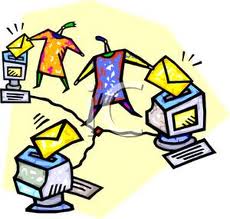 To better understand what I just said, I will use a simple analogy . . .
To better understand what I just said, I will use a simple analogy . . . Sometimes, when I’m daydreaming, I imagine myself in a time machine going back to 1999 to have a serious conversation about email usage with my younger-fundraising-self. I also sometimes wonder if it would be helpful to take a page out of the Arnold Shwarzenegger Terminator movies by traveling back in time to sabotage the work of the person who created email. 😉
Sometimes, when I’m daydreaming, I imagine myself in a time machine going back to 1999 to have a serious conversation about email usage with my younger-fundraising-self. I also sometimes wonder if it would be helpful to take a page out of the Arnold Shwarzenegger Terminator movies by traveling back in time to sabotage the work of the person who created email. 😉 I had the privilege of interviewing a young fundraising professional yesterday for an online article that I am writing. In that interview, we talked for almost an hour about direct mail and her passion for learning as much as she can about that industry’s best practices and how to apply it to her non-profit fundraising work.
I had the privilege of interviewing a young fundraising professional yesterday for an online article that I am writing. In that interview, we talked for almost an hour about direct mail and her passion for learning as much as she can about that industry’s best practices and how to apply it to her non-profit fundraising work. In terms of traditional types of giving, past donations are strong indicators of future giving. That trend logically carries over to planned giving.
In terms of traditional types of giving, past donations are strong indicators of future giving. That trend logically carries over to planned giving.  This factor is in reference to those whom your organization positively affected. The range is fairly broad here. A planned gift might be left to a university by a dedicated alumnus.
This factor is in reference to those whom your organization positively affected. The range is fairly broad here. A planned gift might be left to a university by a dedicated alumnus.  Let me start by stating in no uncertain terms that planned giving prospects do not have to be wealthy.
Let me start by stating in no uncertain terms that planned giving prospects do not have to be wealthy.  Factor four encompasses the large gift loophole for planned giving donors. Although they are often comparable in size, unlike major gifts, planned gifts do not inherently require wealth.
Factor four encompasses the large gift loophole for planned giving donors. Although they are often comparable in size, unlike major gifts, planned gifts do not inherently require wealth.  You’ve probably noticed a theme among three of the traits listed above:
You’ve probably noticed a theme among three of the traits listed above: Sarah
Sarah So you have your RSVP list. You know who is coming. What do you do with that information?
So you have your RSVP list. You know who is coming. What do you do with that information? 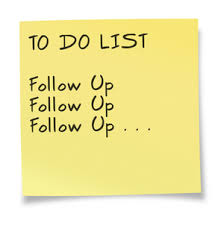 Much like you can create a pre-event V.I.P. list, you can do the same after the event.
Much like you can create a pre-event V.I.P. list, you can do the same after the event. Albert Einstein defined insanity as doing the same thing over and over again and expecting different results.
Albert Einstein defined insanity as doing the same thing over and over again and expecting different results.  There are many ways to ask individuals for donations and support, and not every nonprofit asks in the same way. However, a new report from the fundraising
There are many ways to ask individuals for donations and support, and not every nonprofit asks in the same way. However, a new report from the fundraising 
 I came across a cool
I came across a cool  In recent months, I’ve been reminded of the power of donor databases and Customer Relationship Management (CRM) systems. For-profit corporations grasped the importance of gathering customer data a long time ago, which is why they invested in these systems before many non-profit organizations started doing so. I will divide the remainder of this blog post up into sections and share a few personal stories about my experiences in recent months. At the end of this post, I’ll share a few resources to help you with your search.
In recent months, I’ve been reminded of the power of donor databases and Customer Relationship Management (CRM) systems. For-profit corporations grasped the importance of gathering customer data a long time ago, which is why they invested in these systems before many non-profit organizations started doing so. I will divide the remainder of this blog post up into sections and share a few personal stories about my experiences in recent months. At the end of this post, I’ll share a few resources to help you with your search.![IMG_20150414_215128628[1]](https://donordreams.files.wordpress.com/2015/06/img_20150414_2151286281.jpg?w=169) My husband and I like to take cruises every other year and visit fun places. Over the years we’ve traveled to the Caribbean, Greek Islands, Scandinavian peninsula (and St. Petersburg, Russia), Alaska, and recently the Panama Canal (and Central America).
My husband and I like to take cruises every other year and visit fun places. Over the years we’ve traveled to the Caribbean, Greek Islands, Scandinavian peninsula (and St. Petersburg, Russia), Alaska, and recently the Panama Canal (and Central America).![IMG_20150414_191147999_HDR[1]](https://donordreams.files.wordpress.com/2015/06/img_20150414_191147999_hdr1.jpg?w=300) While some people think this level of interaction is creepy, I believe the vast major of people (including myself) find this comforting and convenient. I prefer to think of it differently. I’m in a 10 year relationship with Princess Cruises, and they better know my preferences just like my husband better know my eye color.
While some people think this level of interaction is creepy, I believe the vast major of people (including myself) find this comforting and convenient. I prefer to think of it differently. I’m in a 10 year relationship with Princess Cruises, and they better know my preferences just like my husband better know my eye color. When I returned from my cruise at the end of April, I immediately hit the road on a business trip. Whenever I visit this one particular client, I always stay at the same hotel — Marriott SpringHill Suites.
When I returned from my cruise at the end of April, I immediately hit the road on a business trip. Whenever I visit this one particular client, I always stay at the same hotel — Marriott SpringHill Suites. It has been called a crisis, scandal, controversy, and problem by journalists. If you are remotely plugged into the world around you, then you’ve probably heard or read something about
It has been called a crisis, scandal, controversy, and problem by journalists. If you are remotely plugged into the world around you, then you’ve probably heard or read something about  None of this was malicious. It was always done out of a frantic sense of convenience and lack of time (or so I told myself).
None of this was malicious. It was always done out of a frantic sense of convenience and lack of time (or so I told myself). Most non-profit organizations are stretched too thin. I know, I know. But this is something you need to make time for because it is important.
Most non-profit organizations are stretched too thin. I know, I know. But this is something you need to make time for because it is important. Create separation and segment your life
Create separation and segment your life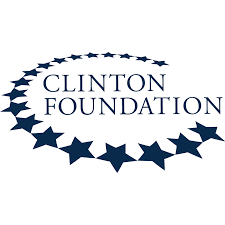 It hasn’t been talked about much, but the Hillary Clinton email story is a “
It hasn’t been talked about much, but the Hillary Clinton email story is a “